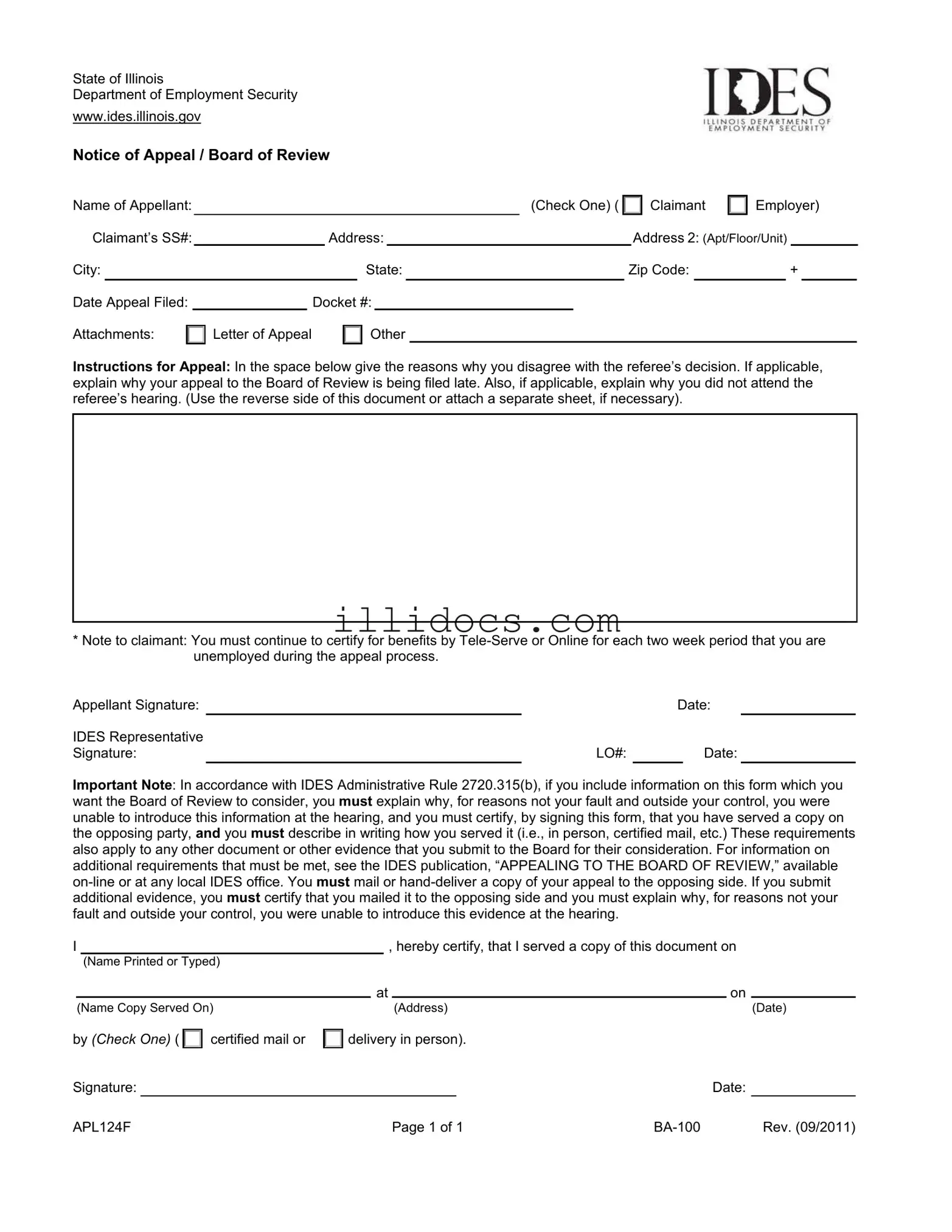What is the Illinois Notice of Appeal form?
The Illinois Notice of Appeal form is a document used to formally contest a decision made by a referee regarding unemployment benefits. This form allows either the claimant or the employer to present their reasons for disagreement with the decision. It is essential for ensuring that your appeal is considered by the Board of Review.
Who can file a Notice of Appeal?
Both claimants and employers have the right to file a Notice of Appeal. If you are a claimant who disagrees with the referee's decision about your unemployment benefits, or if you are an employer contesting a decision that affects your business, you may complete and submit this form.
What information is required on the form?
The form requires basic information such as the name of the appellant, their Social Security number, and contact details. You will also need to specify whether you are the claimant or the employer. Additionally, you must provide the date the appeal was filed and the docket number associated with your case. Most importantly, you should clearly state the reasons for your appeal in the space provided.
What should I include in my reasons for appeal?
When explaining your disagreement with the referee's decision, it is important to be clear and concise. You should outline the specific aspects of the decision that you believe are incorrect and provide any relevant evidence or arguments to support your position. If your appeal is late, or if you missed the referee’s hearing, you must explain those circumstances as well.
What happens after I submit my Notice of Appeal?
After you submit your Notice of Appeal, the Board of Review will review your case. It is crucial to continue certifying for benefits during this process, as you may still be eligible for unemployment benefits while your appeal is pending. The Board will notify you of their decision once they have completed their review.
Are there any additional requirements when submitting evidence?
Yes, if you wish to submit additional evidence with your appeal, you must certify that you have served a copy of that evidence to the opposing party. Additionally, you need to explain why you were unable to present this evidence at the original hearing. This ensures that all parties are informed and have the opportunity to respond to the new information.
